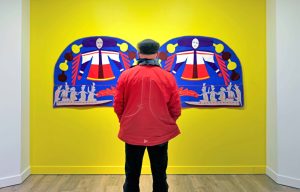
ᑕᑯᒃᓴᐅᔪᒻᒪᕆᒃ Double Vision: Jessie Oonark, Janet Kigusiuq, Victoria Mamnguqsualuk
ᑕᑯᒃᓴᐅᔪᒻᒪᕆᒃ Double Vision profiles three groundbreaking artists from Nunavut—Jessie Oonark (1906-1985) and her daughters, Janet Kigusiuq (1926-2005) and Victoria Mamnguqsualuk (1930-2016). It looks at the matriarchal practice of Oonark and her daughters, and how women artists in Qamani`tuaq mentored one another in producing unique aesthetic and conceptual lineages.
Circulated by the Textile Museum of Canada with the support of the Museums Assistance Program of the Department of Canadian Heritage Project Partner: Toronto Biennial of Art
Project Advisor: Krista Ulujuk Zawadski
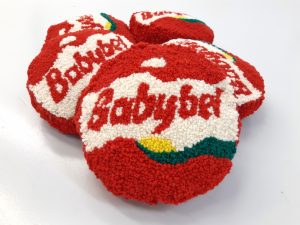
Larry Weyand, Five Babybels, Briggs & Little yarn, burlap, thread, 2019, photo: Courtesy of the artist
Loops to Live By
First produced as a convenient way to keep your feet warm and your floors clean, hooked rugs have a long history in Canada. This history is particularly rich across Newfoundland and Labrador, where people have hooked wool, silk-stockings and now acrylics for over 150 years. This exhibition follows rug hooking from the early utilitarian crafts and fundraising efforts of the Grenfell Industries through to the present as the practice became increasingly politicized and socially engaged. Contemporary rug hooking reimagines the iconography of popular culture, works through oral histories and intergenerational traumas, and provokes discussion and reflection on the future of the individual within globalism. The exhibition concludes with an immersive installation focusing on the emergent practices of Hannah Epstein and Larry Weyand, two artists who push the practice well beyond traditional materials and expectations.
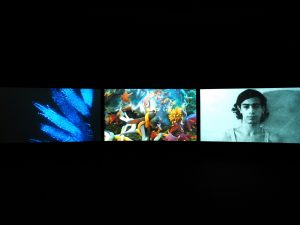
John Akomfrah, Vertigo Sea, Three channel HD colour video installation, 7.1 sound 48 minutes 30 seconds, 2015, photo: © Smoking Dogs Films; Courtesy Smoking Dogs Films and Lisson Gallery
John Akomfrah: Vertigo Sea
In this compelling three-channel film, renowned UK artist John Akomfrah brings together a collection of oblique tales and histories, touching upon migration, the history of slavery and colonization, war and current ecological concerns. This film showcases locations such as the coast of Newfoundland and includes footage from the BBC’s Natural History Unit. With sweeping and hypnotic imagery, Vertigo Sea washes in waves over its audience, bringing with it the traumas, memories and the hopes of a fractured world.
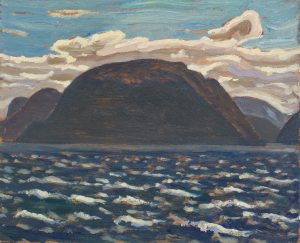
Alexander Young (A.Y.) Jackson, Cape Chidley, Labrador, Oil on wood panel, 1927, photo: Judith & Norman Alix Art Gallery: Gift of the Sarnia Women’s Conservation Art Association, 1956
Of Myths and Mountains
Produced over a series of trips in the early 20th century, the works in this unique exhibition demonstrate the Groups’ attempt at depicting an unmediated relationship between the individual and divinity, alongside the myths at the core of their nation-building ambitions and colonial gaze. A selection of historical and contemporary works by artists from (or otherwise considering) Labrador and Northern Québec talk back to these histories and work to decolonize and destabilize the Groups’ images with depictions of lands bursting with colour, spirituality, habitation and presence. A reading room invites visitors to engage alternative ideas surrounding these “myths and mountains.”
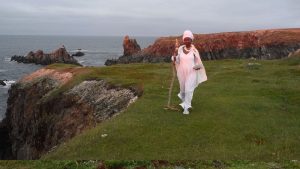
Camille Turner, Afronautic Research Lab: Newfoundland, Video installation, 2019, photo: Courtesy of the artist. Brian Ricks, cinematographer/editor.
What Carries Us: Newfoundland & Labrador in the Black Atlantic
This exhibition brings a new perspective to Newfoundland & Labrador’s centuries-old trade in salt, cod, molasses, rum and other commodities. Though this history is now forgotten, Newfoundland and Labrador played a significant role in the triangular trade system that moved enslaved people and goods between North and South America, Africa and the Caribbean. Drawing on the works of contemporary artists, The Rooms collection and archival sources, guest curator Bushra Junaid makes this lost history visible. She explores the cultural, culinary and artistic legacies of these ongoing connections between island regions.
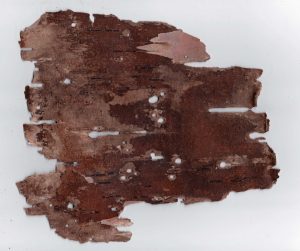
Melissa Tremblett, Self-portrait as Tree (detail from larger installation), Birch bark, 2013, photo: Courtesy of the artist
Melissa Tremblett: Reprise
During her time as part of the Elbow Room Residency Program, Labrador artist Melissa Tremblett spent time with objects in The Rooms collections, including tea dolls made by her grandmother, renowned Innu artist Madeline Michelin. She learned how the objects were constructed, translating their forms into new works. The result is an exhibition as self-portrait. It reveals the process of refining identity and reconnecting to lost histories through text, photography, beadwork, textiles and found natural materials.
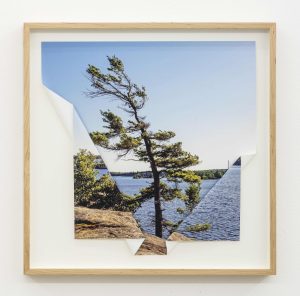
Jon Sasaki, Georgian Bay with Noisy Part Boats Omitted, Folded digital photo, 2017, photo: Photo credit: Toni Hafkenscheid. Courtesy of the artist and Clint Roenisch Gallery
Jon Sasaki (Artist Research Residency Series)
Working with the existing photographs from The Rooms collections, Jon Sasaki treats images as a material, manipulating them to create a simple shift in perspective. He interrogates the editorial decisions of the Group of Seven, who subtracted and embellished aspects of the landscape to suit an idealized version of Nature. With this new body of work, Sasaki examines how these fictions inform our contemporary relationship to the physical world and our constructions of national identity.
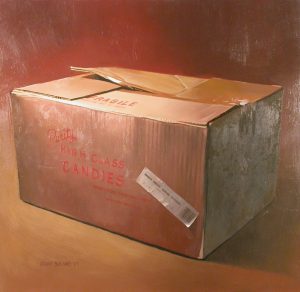
Truth or Myth?
The next installation of Truth or Myth? draws on the permanent collection to explore the changing relationship between cultural identity and food in Newfoundland and Labrador, as portrayed by artists such as Grant Boland, Martin Lyons, Derrick Pottle, Mary Pratt, and Helen Parsons Shepherd.
Grant Boland, High Class Candies, oil on canvas, 2002. Photo credit: The Rooms Provincial Art Gallery, Government of Newfoundland and Labrador Collection







